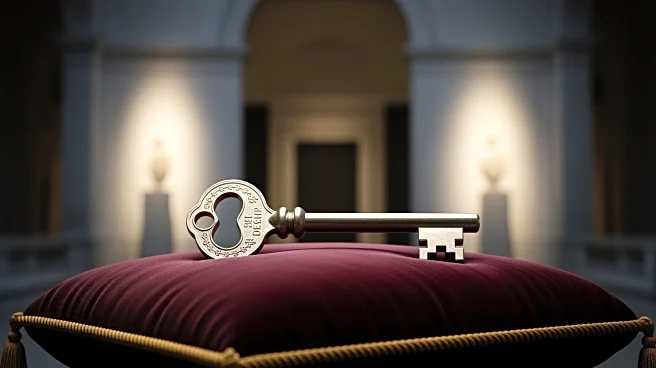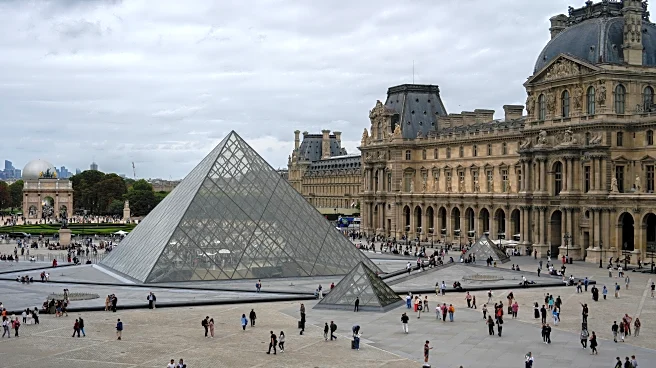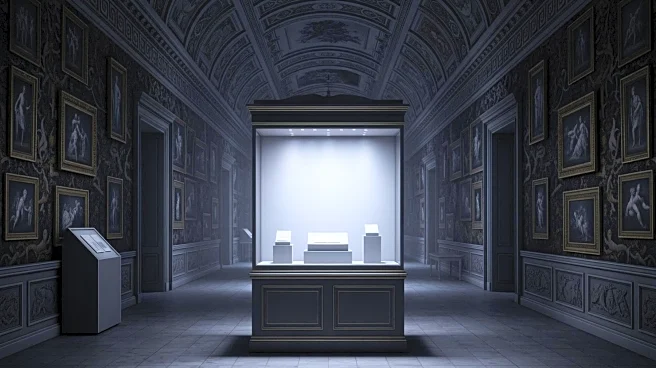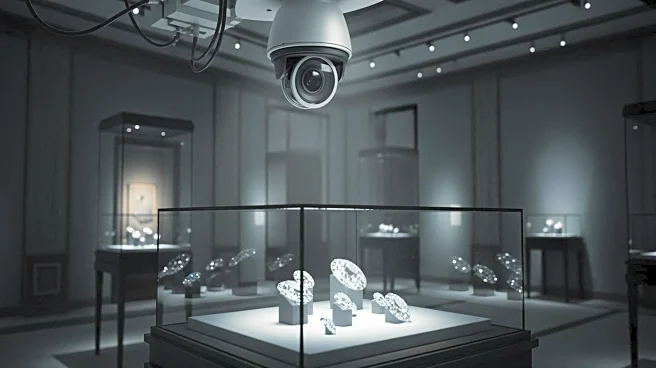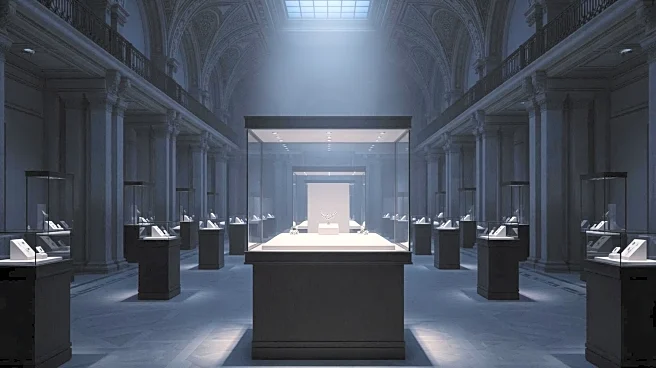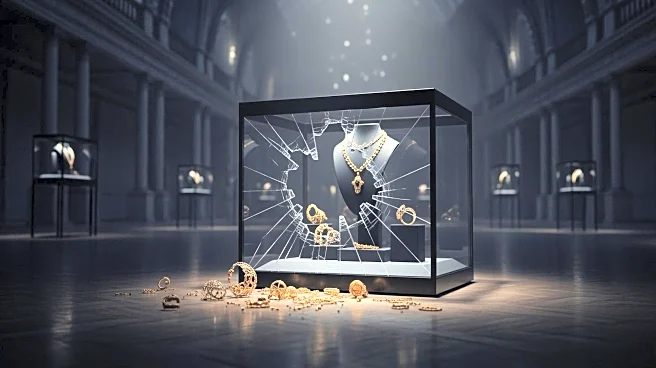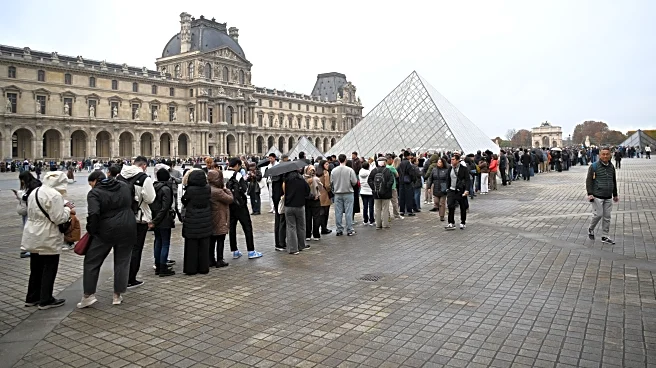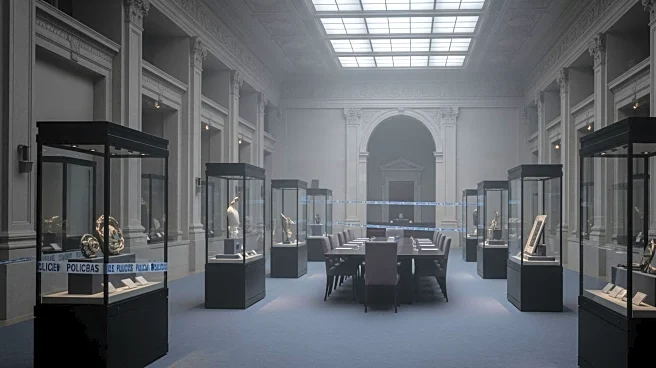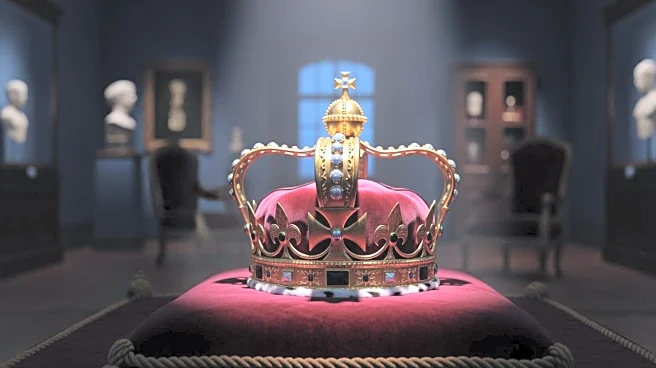What's Happening?
The Louvre Museum in Paris experienced a significant security breach when thieves executed a daring heist, stealing eight items of priceless jewelry from the Apollo Gallery. The theft occurred in the early hours of Sunday morning, with the gang using
a truck equipped with an elevating platform to access the first floor. They then used a disc-cutter to enter through a window, targeting display cases containing the French crown jewels. Among the stolen items were diadems, necklaces, earrings, and brooches belonging to historical figures such as Empress Marie-Louise and Queen Hortense of Holland. Although a crown belonging to Empress Eugénie was recovered damaged near the museum, the incident raises serious questions about the security measures in place at the Louvre.
Why It's Important?
This heist highlights vulnerabilities in the security systems of one of the world's most famous museums, raising concerns about the protection of culturally significant artifacts. The stolen jewels, while having immense historical value, can be easily dismantled and sold on the black market, posing a challenge for law enforcement agencies. The incident underscores the growing audacity of criminal gangs targeting museums, prompting a reevaluation of security protocols across French cultural institutions. The theft not only impacts the Louvre's reputation but also threatens the preservation of France's cultural heritage.
What's Next?
Authorities are expected to intensify their investigation, reviewing CCTV footage and collecting forensic evidence to track down the perpetrators. The Louvre Museum has announced it will remain closed for the day to address security concerns and prevent further incidents. The French government may implement stricter security measures across museums to safeguard valuable artifacts. Additionally, international cooperation might be sought to recover the stolen items and prevent their sale on the global black market.
Beyond the Headlines
The theft raises ethical questions about the commodification of cultural heritage and the responsibilities of museums in protecting historical artifacts. It also highlights the need for advanced security technologies and international collaboration to combat art theft. The incident could lead to long-term shifts in museum security policies and increased public awareness about the importance of preserving cultural heritage.
